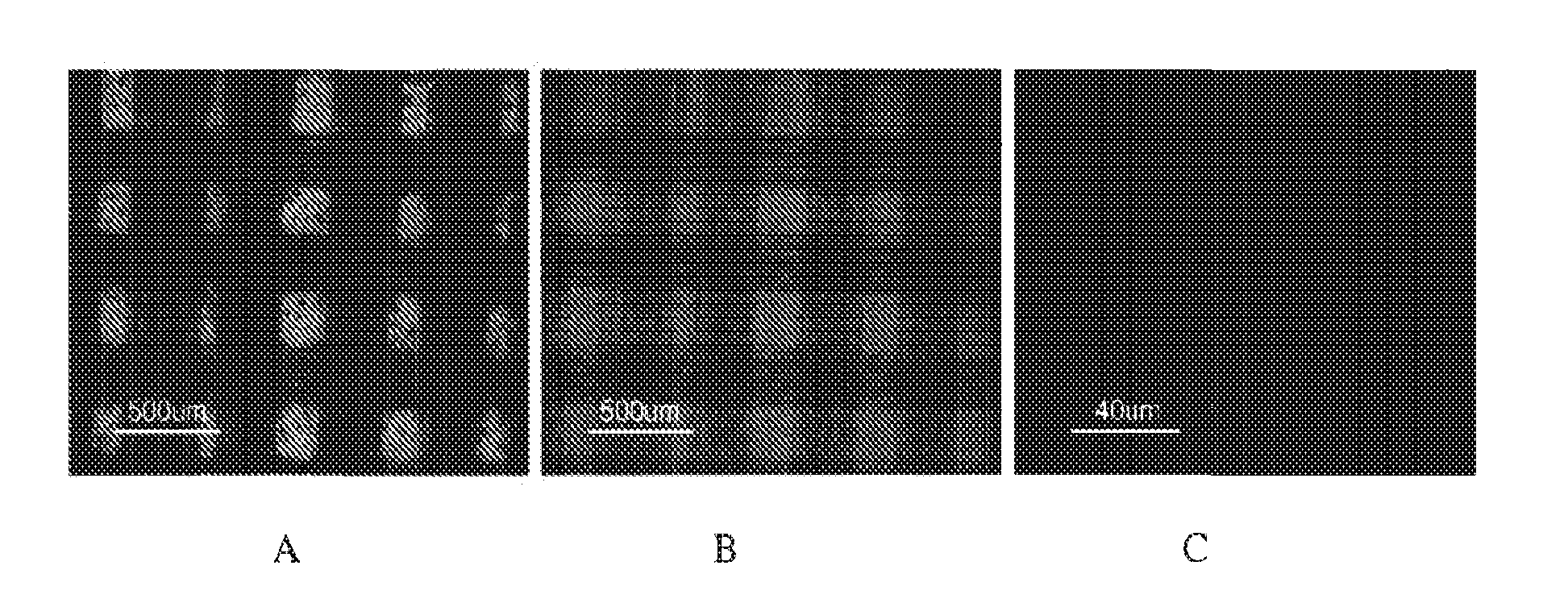Reinforced Silicone Resin Film and Nanofiber-Filled Silicone Composition
- Summary
- Abstract
- Description
- Claims
- Application Information
AI Technical Summary
Benefits of technology
Problems solved by technology
Method used
Image
Examples
Example
Example 1
[0242]Aluminum oxide fibers (2.0 g), 4.4 g of acetic acid, and 35.6 g of de-ionized water were combined in a 100 mL round bottom flask equipped with a condenser, a stirrer, and a heating mantle. The mole ratio of acetic acid to alumina fibers was 3.74. The mixture was heated to reflux with stirring. The mixture was heated at reflux for 120 hours and then allowed to cool to room temperature. The mixture was then centrifuged at 2000 rpm for 30 minutes. The supernatant dispersion was separated from the residue. Approximately, 20% (w / w) of the original solid was dispersed as discrete nanofibers in the aqueous solvent. A scanning electron micrograph of the aluminum oxide fibers is shown in FIG. 1. A transmission electron micrograph of the aluminum oxide nanofibers is shown in FIG. 2.
Example
Example 2
[0243]ORGANOSILICASOL™ IPA-ST (200 g) and 28 g of de-ionized water were combined in a 500 mL three necked round bottom flask equipped with a mechanical stirrer and a thermometer. The mixture was stirred and chilled with an ice water bath to 2° C. Methyltrimethoxysilane (70.72 g) and 3.48 g of acetic acid were added to the mixture. The mixture was stirred for 3.5 h, after which time the ice water bath was removed and the mixture was allowed to warm up to room temperature. The mixture was stirred for an additional 14 h at room temperature. The resin solution was translucent and had a solid content of 24.5% (w / w), as determined by heating a 1.0 g of the sample at 150° C. for 1 h. A silicone composition was prepared by combining the resin solution (8.2 g) with 50 g of the dispersion of Example 1.
Example
Example 3
[0244]Glass fabric (38.1 cm×8.9 cm) was impregnated with the silicone composition of Example 2 by passing the fabric through the composition at a rate of about 5 cm / s. The impregnated fabric was then hung vertically in a fume hood at room temperature to dry, and then cured in an air-circulating oven according to the following cycle: room temperature to 75° C. at 1° C. / min., 75° C. for 1 h; 75° C. to 100° C. at 1° C. / min., 100° C. for 1 h; and 100° C. to 125° C. at 1° C. / min., 125° C. for 1 h. The oven was turned off and the silicone resin film was allowed to cool to room temperature.
[0245]The reinforced silicone resin film was then heat-treated in an oven in a nitrogen atmosphere under the following conditions: room temperature to 575° C. at 5° C. / min., 575° C. for 1 h. The oven was turned off and the reinforced silicone resin film was allowed to cool to room temperature. Photomicrographs of the film after heat treatment are shown in FIGS. 1A, 1B, and 1C. The heat-treated f...
PUM
| Property | Measurement | Unit |
|---|---|---|
| Fraction | aaaaa | aaaaa |
| Fraction | aaaaa | aaaaa |
| Fraction | aaaaa | aaaaa |
Abstract
Description
Claims
Application Information
 Login to View More
Login to View More - R&D
- Intellectual Property
- Life Sciences
- Materials
- Tech Scout
- Unparalleled Data Quality
- Higher Quality Content
- 60% Fewer Hallucinations
Browse by: Latest US Patents, China's latest patents, Technical Efficacy Thesaurus, Application Domain, Technology Topic, Popular Technical Reports.
© 2025 PatSnap. All rights reserved.Legal|Privacy policy|Modern Slavery Act Transparency Statement|Sitemap|About US| Contact US: help@patsnap.com



